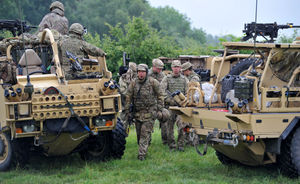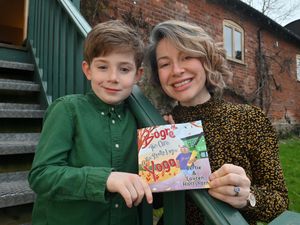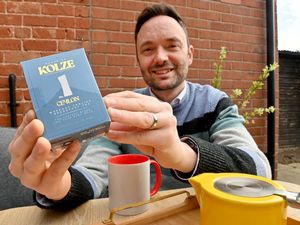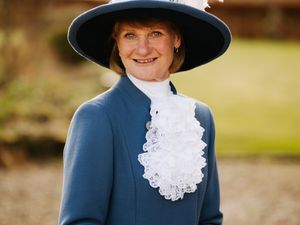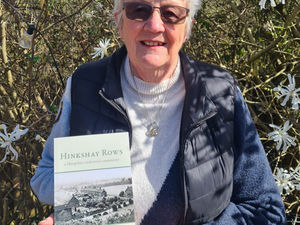Explosive secrets at Shropshire army camp that were only unveiled after the war
Even as the Second World War moved into its final stages, sensitive military sites continued to be protected by a cloak of secrecy and censorship.
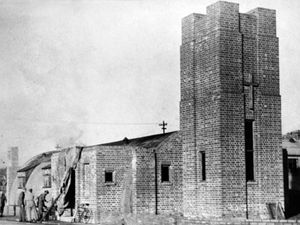
So when the Star reported in January 1945 on something as innocuous as the building of a church, the location given was as vague as "an army camp in the West Midlands."
But local knowledge is a powerful thing, and our recent picture and feature about that mysterious church, which was built around a Nissen hut using salvaged materials, saw Mark Cuthbert-Brown quickly on the case in response to our appeal to readers to pinpoint it.
"It was at Nesscliff, wasn’t it? And I do mean Nesscliff rather than Nesscliffe – though many would go with the latter despite the Army having always gone without the trailing 'e' used by most in recent years," he said.
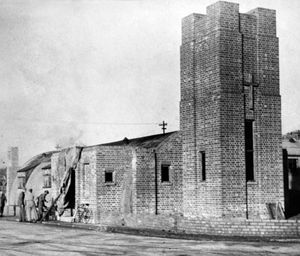
Mark, who lives at Pentre just a short distance away, added: "I did serve in the Army – a full career that included three years or so in Copthorne Barracks – but I’ve come to know Nesscliff camp through settling in the area. Curiosity has had me conducting occasional research and I’ve uncovered a few maps and some historical documents.
"The church has long gone, decades ago and long before my arrival."
The Star's 1945 story told how the valuable leaded lights came from the ancient Shropshire church at Melverley, the panelling was of salvaged timber, and the altar, altar rail, pulpit and lectern were made of oak worked and carved by soldiers.
It reported that the stained glass panel, representing Truth, was a gift of some Surrey friends (although Mark says some articles say it came from Somerset), and the organ was presented by the British Red Cross.
Using the clues to put the jigsaw together Mark was increasingly certain that the church was at Nesscliff/Nesscliffe, before stumbling on a little book called “The Nesses Past and Present” printed in celebration of the 2002 jubilee.
It tells how Nesscliff camp originated in 1940 as an anti-aircraft administrative unit before becoming an ammunition depot.
"In 1960 the ammunition depot was closed and the facilities mothballed for two years. In August 1962 the camp was opened again, first for weekend training for Territorials, and then for annual camps, and then for more regular use," the book says.
"The fine church was demolished at this time, the stained glass windows taken away, and some of the roof boards were used for a bowling alley in West Felton. There had been a wooden Roman Catholic Church too, which was demolished at some time," it adds.
The book says accommodation in the main camp was in huts and they were used in the 1980s BBC film "The Monocled Mutineer" because they gave an authentic wartime background.
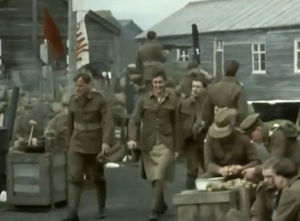
Later another BBC half-hour film was made called "Her Majesty's Service."
The military did lift the lid on what was officially called Central Ammunition Depot, Nesscliff, soon after the war as members of the Press were allowed a tour in June 1946 of what was described as "the second largest permanent ammunition storage depot in the country." It was "a secret which Germany never fathomed, and not one bomb ever fell on it."
Covering about 2,000 acres and served by a railway, its function was to receive ammunition direct from factories and issue it chiefly to field forces. The depot handled ammunition ranging from .22 bullets to 9.2 inch gun shells, and personnel often worked around the clock.
The article mentions that the building of the garrison church made out of salvaged materials had previously been reported on by the Star "when anonymity was essential."
"There is a garrison theatre, and many recreational and educational facilities," it concludes. The theatre was primarily a cinema, but live shows were also staged during the war.
As for the site's role now, Mark says: "It’s been a training camp since the early 1960s, mostly TA (now 'Army Reserve') and cadets plus training space for helicopter trainees from Shawbury. But with withdrawal from Germany, it’s used ever more now by the Regular Army too – often specialist units such as Royal Signals, logistics, medics and the like to set up field facilities."
